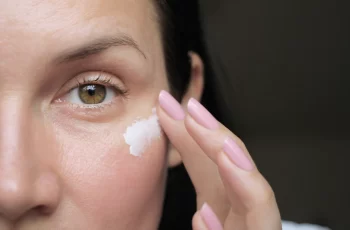
Skincare 101: How to Wash Your Face Properly
It may sound a little silly to some, but you’d be surprised how many of us still don’t wash our faces properly. With the market flooded with products, tools, and methods, there is definitely a daily care routine that works for you and your skin. So here we answer some questions about proper facial cleansing.
How to Wash Your Face Properly
Let’s get back to basics and show you the best way to wash your face and hands using a formulated cleanser. This is the easiest way to maintain a daily routine for optimal results and to maintain good clarity on your skin.
How to Wash Your Face Properly:
Wet Your Face with Warm Water
Hot and cold water are too harsh for the skin and are too rough. Warm water gently opens up the pores without causing irritation to the skin. It’s up to you how you moisturize your face, either by splashing it with water or by using a washcloth or towel to wet your skin. Whichever method you choose, wetting your skin first will make it easier for the cleanser to spread and lather on your face, removing all impurities and traces of makeup.
Use the cleansing product of your choice
Once you’ve found the right cleanser, apply a 10p-sized amount to damp skin and then use your fingertips to apply it to your face in circular motions. The advantage of using your fingers is that you can apply the product to any part of your face, from the corner of your nose to your hairline. Don’t be afraid to let the cleanser fully penetrate your skin and take your time. Cleansing your skin for 60 seconds has been shown to be the ideal amount of time to thoroughly cleanse your skin, unclog your pores and remove impurities such as bacteria, dirt and debris from your skin.
Avoid using soaps or cleansers that are not suitable for facial skin, as they are often too harsh and can strip your skin of important natural oils and unbalance its pH levels. You also need to consider your skin type when using a cleanser, especially if you have oily skin types, as many foaming cleansers contain a lot of harsh chemicals that can dry out your skin and cause excess sebum production, making your skin even more oily.
Rinse and pat dry
Rinse the cleanser off your skin thoroughly with warm water using your hands or a towel, then pat your face dry with a soft towel. Try not to rub your skin, as this can cause irritation and signs of aging, such as fine lines and wrinkles.
Next Steps
The next steps depend on your daily habits, so they may vary from person to person. You can follow up with a toner, serum, or moisturizer, but since you’ve made the effort to cleanse your skin properly, you’ll find that these products work better and penetrate deeper into the underlying layers of the skin.
With this, you’ve mastered the basic steps to properly wash your face. This is a great starting point for your skincare routine, and you can expand and change it up over time as you gain more confidence.
What are the best tools to use to wash your face?
Once you’ve mastered how to properly wash your face, you may be interested in taking the next step and improving your skin care routine by looking at cleansing tools. Here are some of the most popular tools currently on the market.
Cleansing pads – These are usually made of silicone and have tiny bristles that allow products to penetrate deeper into the skin than your fingers.
Cleansing brushes – These brushes rotate or vibrate to instantly remove dead skin cells and bacteria. These tools can be very abrasive, so if you have sensitive skin, it’s best to avoid them.
Konjac cleansing sponge – This sponge may look like a rock, but it’s actually a root found in Asian countries like Japan and Korea. Its fiber content absorbs dirt and impurities. Best not to use with a scrub, as konjac sponges naturally exfoliate, so they work best with cleansers and face washes.
Flannel or Muslin Cloth – There’s no denying that the age-old flannel cloth is still considered a great tool for washing your face. Not only is it gentler, but it also has the added factor of sustainability, as it can be washed and used over and over again. Muslin cloths are slightly different in that they are slightly rougher, which gives them the added benefit of exfoliating and cleansing the skin at the same time.
These tools are the most effective on the market right now, but considering how fast the beauty industry is evolving and changing every year, it won’t be long before another skin-changing product comes along!
When should you wash your face?
Washing your face twice a day is a point that is constantly debated. Many believe that daily cleansing is all it takes to maintain a healthy and fully functioning skin barrier, although some believe that cleansing in the morning and at night is most effective. Effective routine.
It’s entirely up to you, but I recommend that you cleanse your skin at night. Our skin is exposed to many environmental influences every day, such as: B. Pollution, and if you choose to wear makeup, improper makeup removal before bed can also damage your skin. Sleeping with makeup on can clog your pores, leading to breakouts, blemishes, and premature skin aging. By properly cleansing your skin at night and then using a well-chosen serum and facial oil that is rich in soothing and rejuvenating ingredients, you will help your skin recover and regenerate skin cells while you sleep.
Those who believe in washing their face in the morning should try to choose a product that will leave skin looking radiant and full of life. Vitamin C and glycolic acid are powerful ingredients that can give your skin a glow and get you ready for the day ahead.
Can you wash your face with just water?
There is nothing wrong with washing your face with plain water. However, if you want your skin to stay healthy and as flawless as possible, it is best to use a face cleanser that can penetrate deep into the underlying layers of the skin to remove impurities that can cause acne, blackheads, fine lines, and dull skin. Unfortunately, this is something that water cannot do. Here are some of the skin care ingredients to look out for in a face cleanser.
Glycolic Acid
Vitamin C
Hyaluronic Acid
Salicylic Acid
Lactic Acid
Here’s a quick introduction to skin care and how to wash your face properly. Sometimes when it comes to skin care, it’s best to go back to the basics of your daily routine and start from there. You’ll be amazed at the results and feel confident in your skin.


